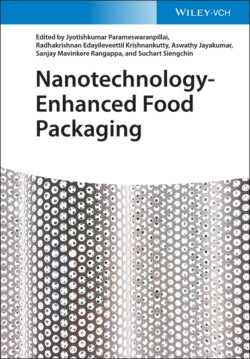Читать книгу Nanotechnology-Enhanced Food Packaging - Группа авторов - Страница 52
3.1 Introduction
ОглавлениеStarch is a polysaccharide used by plants as an energy reserve that is often considered the second most common biomass on Earth [1–4]. It is found as granules of different morphologies (depending on the botanical source) in plant tissues, mainly seed, roots, tubers, leaves, and fruits [5]. Starch structure is composed by α-D-glucopyranosyl units that can be linked in either α-D-(1–4) and/or α-D-(1–6) linkages. Likewise, these linkages give rise to two types of molecules: the linear amylose formed by approximately 1000 glucose units linked in α-D-(1–4) manner and the branched amylopectin, formed by approximately 4000 glucose units, branched through α-D-(1–6) linkages [2, 3, 6]. The union of both amylose and amylopectin forms a semi-crystalline structure arranged as small granules with diameters between 1 and 100 μm. Most unmodified starches have an amylose content around 20–30%, with amylopectin ranging from 70% to 80%. Some starches can have very low amylose contents, below 1%, such as waxy corn starches. The size and morphology of starch granules are dependent on their botanical source, as their shape can vary from spherical, oval, polygonal, lenticular, and kidney shapes and their size can range from <1 to 100 μm [7].
